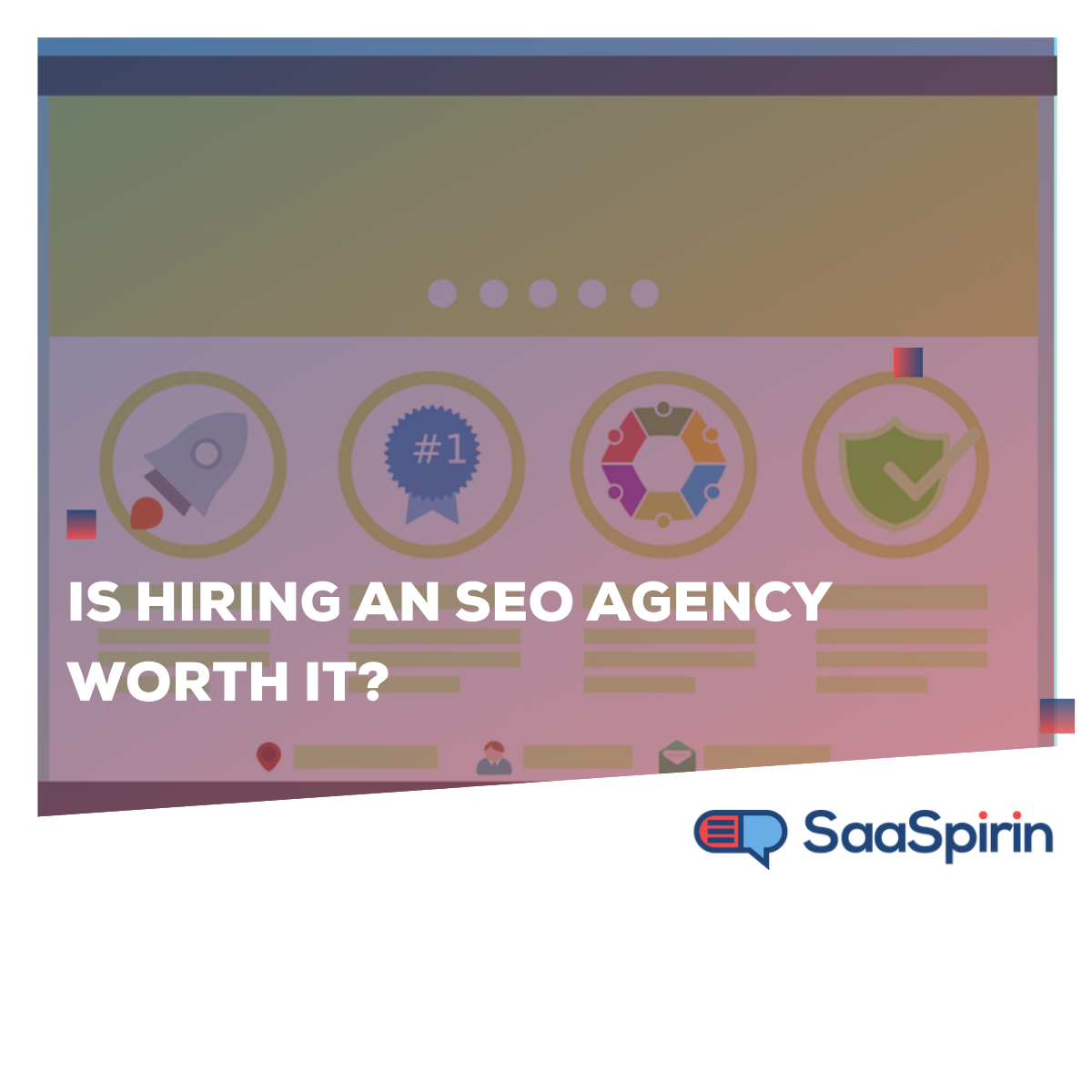SEO for startups - 5 Things you need to focus on to generate organic conversions
By Yaseen Sadan on February 14, 2024
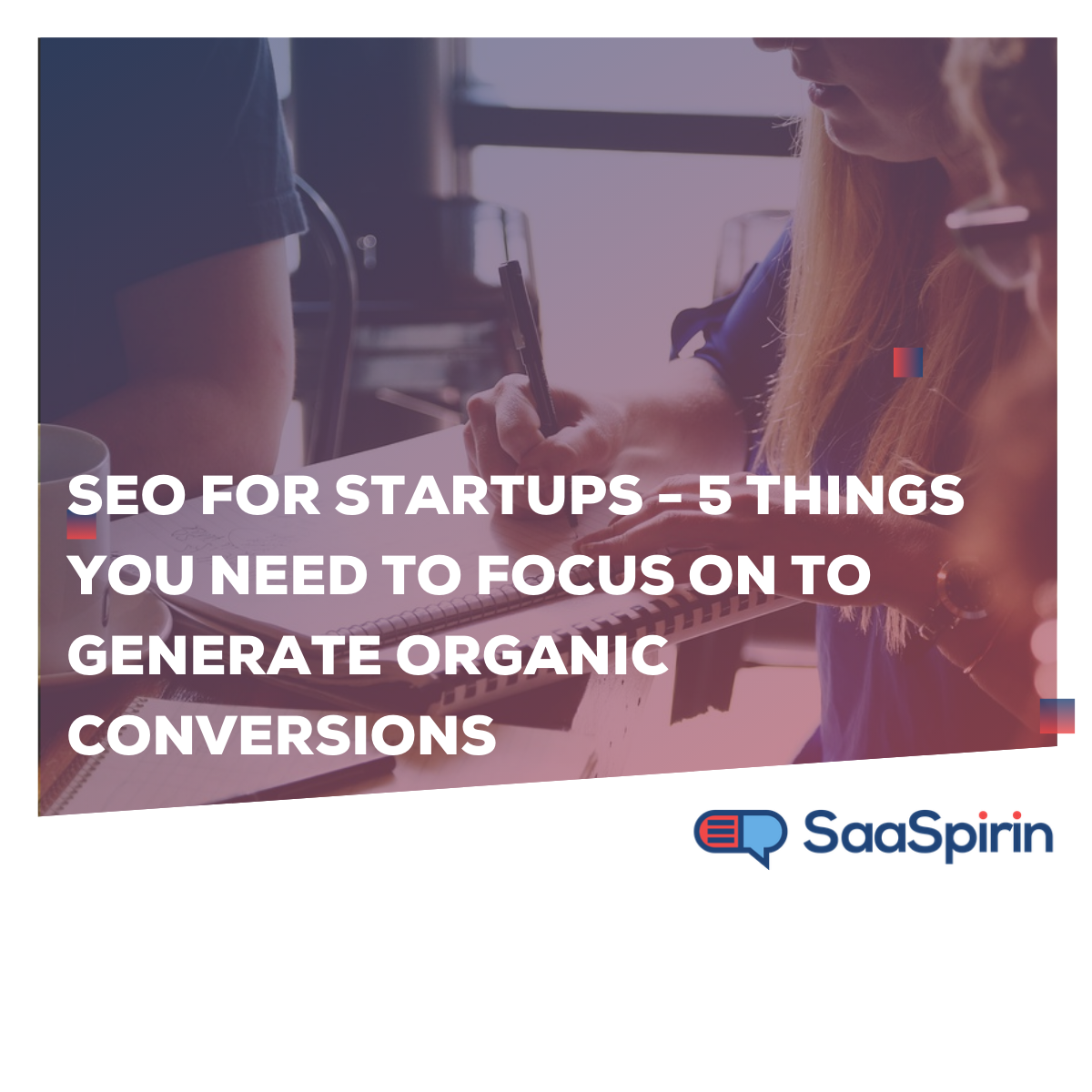
Startups often think of SEO as a long-term lead gen strategy, but if you target the right keywords and fulfill search intent inside your articles, it's possible to generate product conversions within a month or two.
The main reason startups think of SEO as a long-term strategy is because they are making these three mistakes:
- They aren’t choosing the right keywords
- They aren't fulfilling search intent inside their articles
- They don't have an active promotion strategy
So, in this guide, we’ll walk you through five actionable steps that you can take to bring in product conversions for your startup in the short and long term:
- Target bottom-of-the-funnel keywords first
- Publish interview-based articles (don't rewrite what you find on the first page of Google)
- Track conversions inside Google Analytics
- Run Google Ads or Facebook Ads for quick traffic/conversions
- Build backlinks to the highest-converting articles
We hope this is a nice contrast to all the other surface-level articles on the internet saying the most obvious things like: create a user-friendly website, set SEO goals, download SEO software.
Who are we: We’re a SaaS SEO agency whose main goal is to get brand new SaaS websites to 10K monthly traffic within 12 months. We do this by ranking for high-volume, low keyword difficulty keywords. However, we also prioritize product sign-ups, so we also target high-buying intent keywords, allowing our clients to see conversions in as little as 1.5 months. So, if you’d like to learn more about our process, book a quick call with our founder.
1. Target bottom-of-the-funnel keywords first
The number one factor determining how quickly your startup will generate organic conversions is the type of keywords you target.
Too often, we see startups targeting high-volume, low-buying intent keywords because they think the more traffic they can drive to their website, the more conversions they'll get.
However, we know from experience that this isn't necessarily true.
The problem with high-volume keywords is that they typically don't have high-buying intent behind them.
For example, if your startup is selling HR software, you might be tempted to go after the keywords, "what is HR software" and "what is the importance of HR software" because they have hundreds of searchers.
But think about it: While you might get plenty of traffic, someone typing "what is HR software" into Google isn't ready to spend money on your software solution yet. They don't know what HR software is and why it's important.
You'll have to put them through a lead nurturing funnel, which can take several months, making it impractical if you're looking for quick conversions.
This is why we recommend targeting bottom-of-the-funnel keywords like "best HR software for small businesses" and "best HR software for contractors."
While these terms may have less volume, they see higher conversion rates because searchers Googling them are ready to buy from you. They just Googled your software product.
SEO for startups case study: MightyForms
When we began working with MightyForms, an online form builder, we prioritized buying intent over search volume.
For example, the keyword "what is a form builder" had 100 monthly volume at the time, so we could've easily targeted this keyword, brought in thousands of readers, and used this as proof that our SEO strategy is working.
However, nobody typing "what is a form builder" into Google is ready to spend money on a form builder. So, instead, we targeted these keywords:
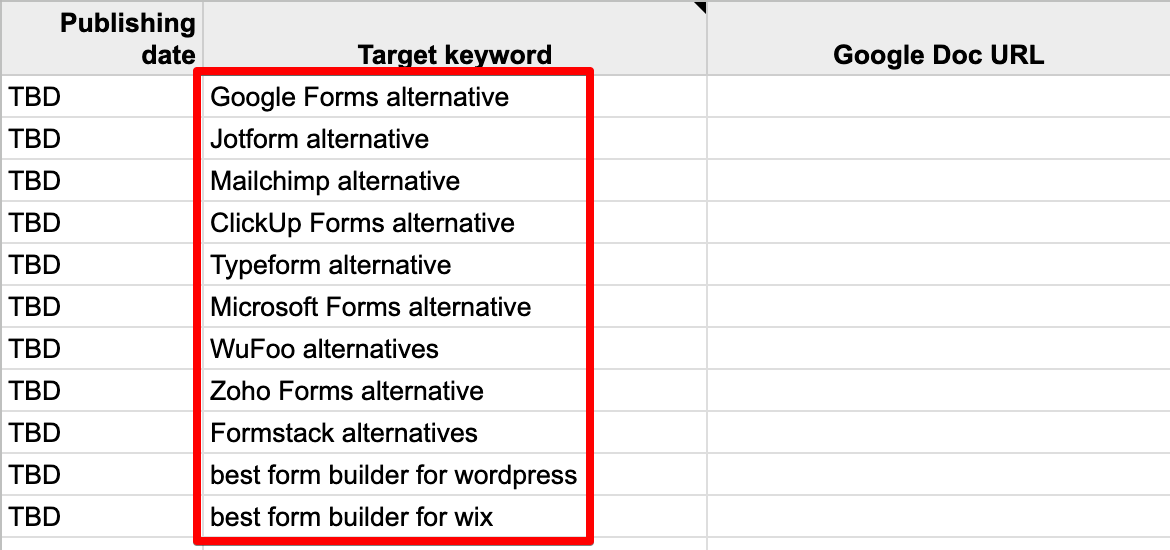
Someone typing “Google Forms alternative” or “Jotform alternative” probably already used these form builders and decided it’s not for them. So they are searching for alternatives that solve the limitations of Google Forms or Jotform. This is as high buying intent as you can get.
All we needed to do was understand the common reasons why users stopped using these alternatives, and present MightyForms as the solution.
2. Publish interview-based articles (don't rewrite what you find on the first page of Google)
Next, write product-based articles that show your target audience how your product solves their pain points better than the alternatives.
This often involves doing three things:
- Interviewing your customers to learn what their pain points are
- Understanding what features your product has that solve these pain points
- Differentiating your product's features from the competition
This is where we see many startups going wrong. Instead of targeting customer pain points and differentiating themselves from the competition, they’ll just write a surface-level article explaining the most obvious things.
This high-level fluff shows they don't really understand their target readers' pain points.
Instead, we recommend hopping on a video call with your customer before writing an article. Ask them questions about why someone might be typing in the keyword you're targeting and what pain points this searcher is experiencing.
With this information, you can target customer pain points in the article’s introduction so readers resonate with what you're saying right off the bat. You can then dedicate a heading to each pain point and show how your solution solves these limitations better than the competition.
SEO for startups case study: MightyForms
To give you an idea of how we do these interview-based pieces here at our agency, let’s use MightyForms as an example.
MightyForms is an online form builder, so naturally, one of the first bottom-of-the-funnel terms we targeted was "best form automation software."
After doing interviews with our client, we understood that there were five major problems with most form automation software on the market:
- The automation features were limited
- They couldn't recover abandoned leads
- They couldn't collect payments securely
- They didn't use AI to analyze form statistics
- They didn't offer advanced logic rules
So, in the article's introduction, we immediately listed out these pain points. When our target reader sees these pain points and resonate with them, they think to themselves, "Yes! They understand me. This is my people." This pain point resonance is ultimately what gets people to buy your product, not high-level fluff.
We then go on to address how MightyForms solves these pain points better than the other form builders in each of the article's headings.
3. Track conversions inside Google Analytics
Once you've identified high-intent search terms and written interview-based pieces targeting them, it's time to set up first-click and last-click conversion tracking inside Google Analytics.
This conversion tracking will allow you to understand which articles searchers are reading before signing up for your product.
Once you've identified these articles that are converting better than the rest, you can choose to run ads for quick traffic/conversions and build backlinks for long-term traffic/conversions.
4. Run Google Ads or Facebook Ads for quick traffic/conversions
You probably don’t have the time to wait three to six months for Google to rank your article. So, in the meantime, we recommend running Google Ads and Facebook Ads to these bottom-of-the-funnel posts and driving some quick, high-intent traffic.
In our experience, generating product conversions within a month is possible using an effective Google Ads or Facebook Ads campaign. This can provide you with the cash flow to keep the lights on while waiting for Google to rank your article and bring in those organic conversions.
Once you begin generating organic conversions, you can taper off your Google Ads and Facebook Ads spending and begin building backlinks to the articles that are converting best.
5. Build backlinks to the highest-converting articles
After two or three months of running ads to your bottom-of-the-funnel articles, check where Google ranks your piece without you actively building backlinks to it.
If you fulfilled search intent inside your article, you should be ranking in the lower half of the first page. This is a very rough estimate and your ranking will depend on your industry and competition, but at SaaSpirin, this is where our articles tend to rank with zero backlink building.
So, in order to give your articles that extra boost and rank in the top three positions, taper off your ad spend and use this marketing budget to build backlinks to the highest converting pieces.
As you build backlinks, you'll start ranking in the top half of Google's first page, driving more high-intent traffic to your articles and ultimately bringing in more long-term conversions.
Take your SaaS website to 10K monthly traffic in 12 months!
If you don’t feel like handling your startup’s SEO in-house, consider jumping on a call with us, and we’ll take care of generating organic product conversions.
We’ve done SEO for startups in over 15 industries, and our unique hybrid (top and bottom-of-the-funnel) SEO approach allowed us to bring in consistent traffic and conversions for these startups. This is what our approach looks like:
- Run keyword gap analysis: The foundation of our SEO strategy is identifying keywords your competitors are ranking for and you aren’t. Also known as keyword gap analysis, this allows us to identify keywords you have a good chance of ranking for.
- Write articles around customer pain points: We’ll then interview you to understand what pain points searchers are facing when Googling these keywords, and we’ll write articles showing how your product solves these pain points.
- Track conversions inside Google Analytics: We also track conversions inside Google Analytics so we know where conversions are coming from.
- Build backlinks to authority websites: Actively building backlinks is an important part of SEO for startups because it signals authority to Google and allows you to rank higher. But instead of building backlinks to random pages, we’ll build backlinks to the highest converting pages. This lets these pages rank higher and generate more conversions.
If you’re looking to run SEO for your startup and you’d like to learn more about our hybrid SEO approach, book a call with us here.
You May Also Like
These Related Stories
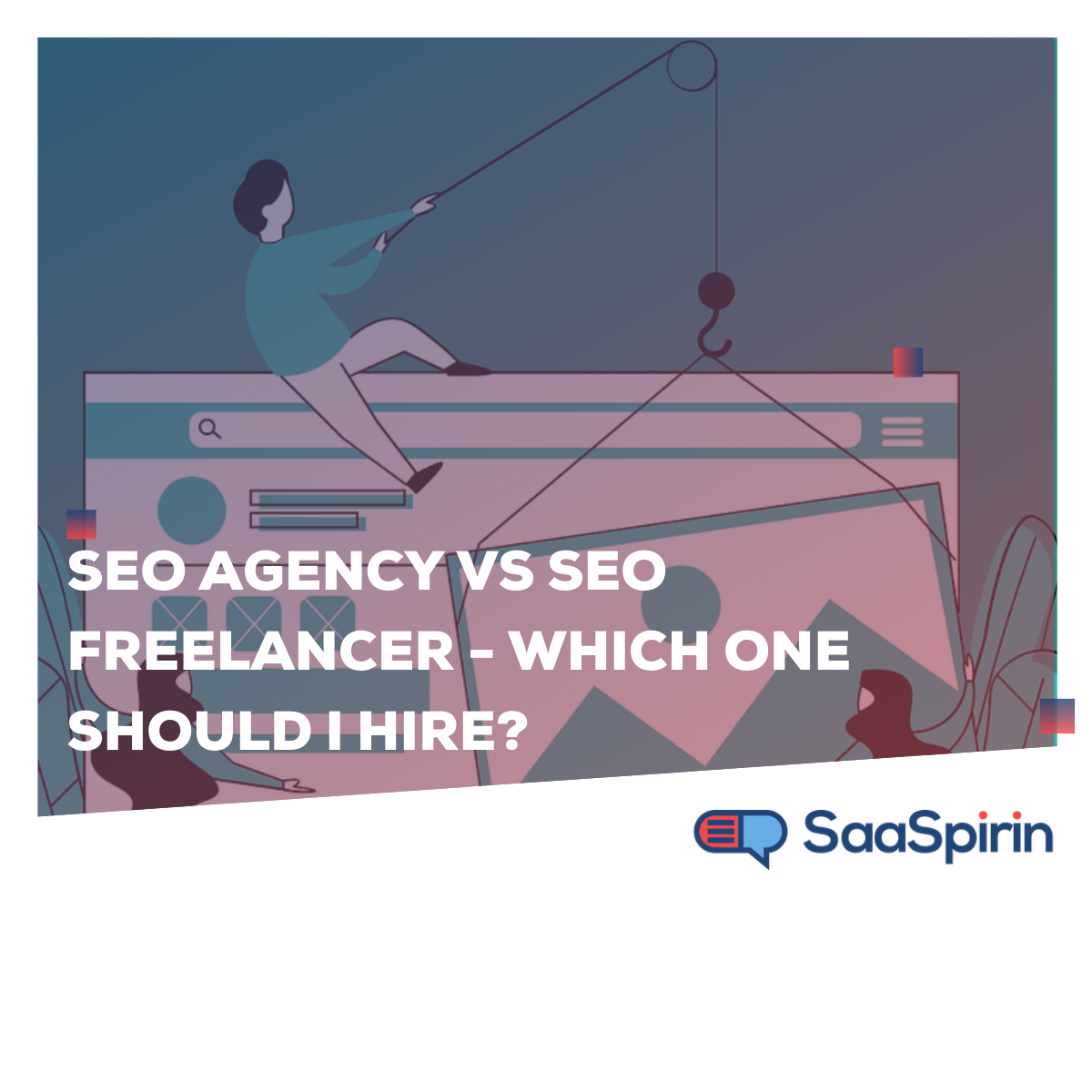
SEO agency vs SEO freelancer - Which one should I hire?
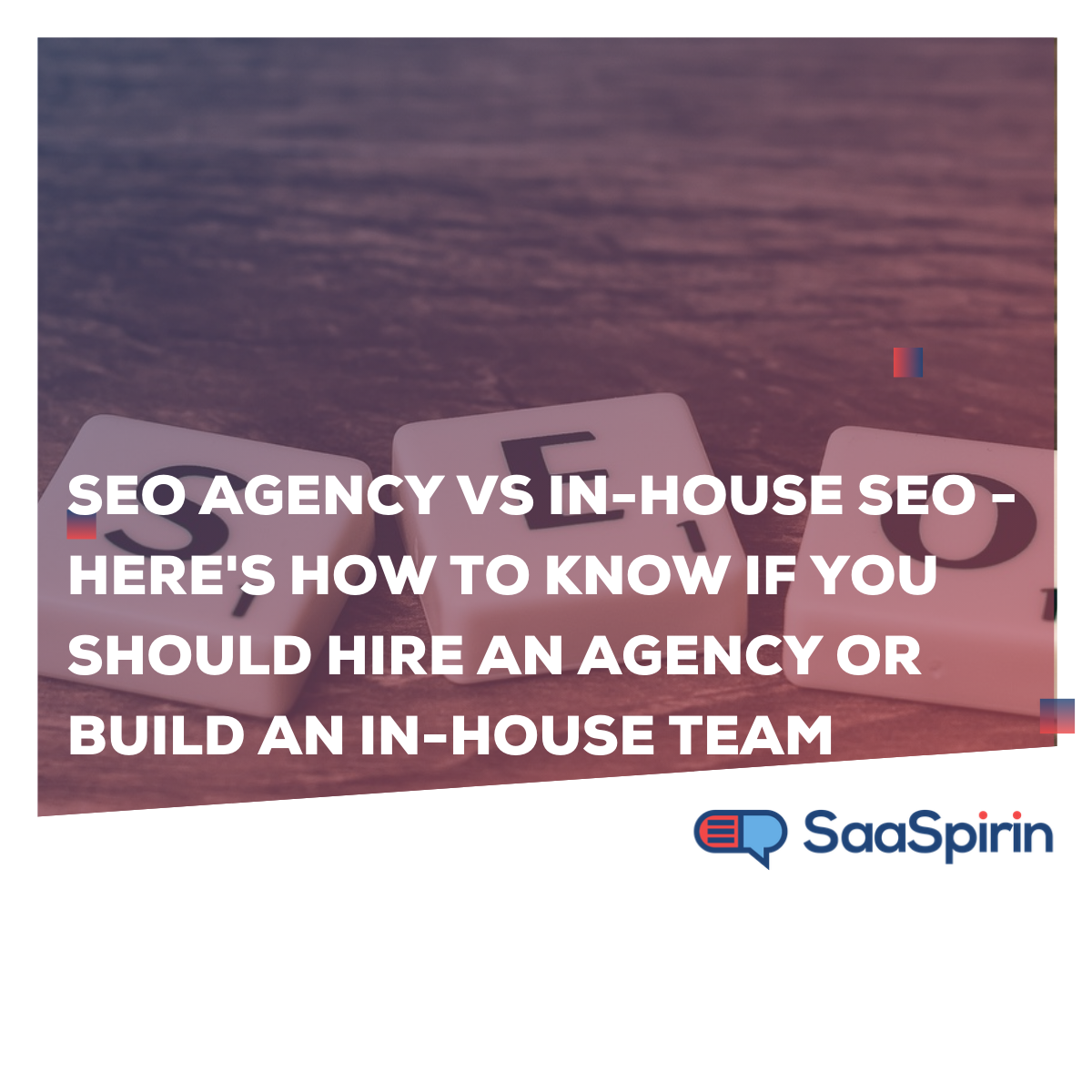
SEO agency vs in-house SEO - Here's how to know if you should hire an agency or build an in-house team
